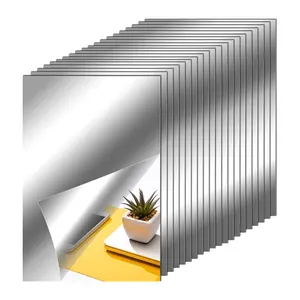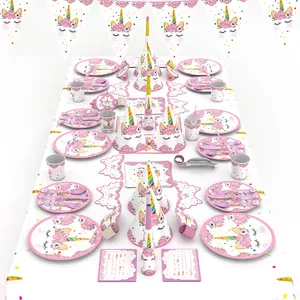Popular in your industry










































Top categories
About dark wood cutting board
Introduction
In the realm of culinary arts, the tools you use can be as significant as the ingredients you choose. Among these tools, the humble cutting board often goes unnoticed, yet it plays a pivotal role in food preparation. This article delves into the world of dark wood cutting boards, exploring their aesthetic appeal, the types of dark wood used, their functional benefits, and how to choose the right one for your kitchen. We'll discuss the unique blend of functionality and aesthetics that these boards offer, from the rustic charm of walnut to the distinctive allure of ebonized red oak and cherry. Let's embark on this journey to discover how these handcrafted pieces can elevate your culinary experience.
The Aesthetic Appeal of Dark Wood Cutting Boards
The handcrafted dark wood cutting boards from our collection are a perfect blend of aesthetics and functionality. Made from 100% natural ash wood, these boards combine stark black with the wood’s rustic texture, creating a timeless balance. The distinctive dark finish is achieved through a special, all-natural technique, where the artisans burn the wood via a hot flame. The charred wood reveals tales of aged trees in a luxurious language of deep natural patterns, highlighting the wood grain in a striking way. These boards are not only great for food preparation but also serve as the perfect background for a cheese or charcuterie board, or simply as a decorative piece in your kitchen.
Types of Dark Wood Used in Cutting Boards
Walnut is a popular choice for dark wood cutting boards. Its rich, dark chocolate color is aesthetically pleasing and it's sturdy enough for cutting. Walnut is slightly softer than maple, but it's still durable, making it ideal for preparing meals. It also serves as a beautiful board for charcuterie. Ebonized Red Oak and Ebonized Cherry are other types of dark wood used in cutting boards, offering a unique aesthetic appeal and durability.
Walnut
Walnut wood, particularly black walnut, is a popular choice for dark wood cutting boards due to its aesthetic and functional qualities. It's a hardwood that's environment resistant, making it suitable for both indoor and outdoor use. Walnut wood ranges from a light brown to a dark chocolate shade, often with streaking and tones of purple, grey, and red. It's semi-ring-porous, with closed-grain walnut being best for cutting boards as it limits liquid absorption. Black walnut has a Janka hardness rating of 1,010 lbf, making it durable yet kind to knives. It also offers high resistance to rot and has antimicrobial properties.
Mahogany
Mahogany, a tropical hardwood, is known for its beauty and durability. However, its suitability for cutting boards is questionable. Despite its aesthetic appeal, mahogany scores relatively low on the Janka hardness test (800 to 850 lbs), meaning it's prone to knife marks. It's also an open-grained wood, which can trap food particles and harbor bacteria. While it stands up well to water and is relatively rot-resistant, it's not the most durable choice for a cutting board. Mahogany is often chosen for decorative cutting boards, such as charcuterie and cheese boards, due to its attractive look.
Ebony
Ebony wood is a dense, tough lumber, known for its high density and natural oils. However, its toughness and strength, measured by a Janka rating of 3220 lbf, make it too hard for regular use as a cutting board, potentially blunting kitchen utensils. Additionally, Ebony wood is a 'sensitizer', which can cause allergic reactions in some individuals. While it's not poisonous, its use for direct-food-contact surfaces is best avoided. It can be used for decorative boards or indirect-food-contact surfaces like utensil handles, provided they're sealed with a food-safe sealant.
The Functional Benefits of Dark Wood Cutting Boards
Black walnut cutting boards are a popular choice for those seeking a combination of durability and aesthetics in their kitchen. One of the standout features of black walnut wood is its exceptional durability. Black walnut is a strong hardwood resistant to warping and cracking. This makes it an excellent choice for heavy-duty chopping and slicing. In terms of porosity, black walnut falls somewhere in between hardwoods and softwoods. It is less porous than softwoods like pine or cedar, meaning it is less likely to absorb moisture and bacteria. However, regular oiling and proper drying after each use are crucial to prevent bacterial growth and maintain the longevity of your black walnut cutting board.
Durability and Longevity
Premium wooden cutting boards, like those made from dark woods such as walnut, mahogany, or ebony, can withstand significant use and last between five and ten years with proper care. They resist bacteria better than plastic and can be restored with a bit of effort. However, they should be replaced when excessively worn or when the seams between the laminated pieces begin to separate, as bacteria can grow in these areas. Despite their durability, they are not dishwasher safe and require mindful maintenance.
Hygiene and Maintenance
Maintaining the hygiene of a dark wood cutting board is crucial for its longevity. Always remove food particles after use and apply dish soap for a thorough clean. To sanitize, use a mild solution that won't harm the wood. Never put your cutting board in the dishwasher as it can cause warping or cracking. Instead, dry it manually to prevent moisture build-up. Regularly season your board once a month to maintain its quality and repair any minor damages promptly. Proper storage is also key to prevent any unnecessary wear and tear.
Knife-Friendliness
The soft straight grains and hand sanded surface of the dark walnut wood cutting board not only add to its aesthetic appeal but also play a functional role. They help to keep knives sharp and straight, making this cutting board perfect for all culinary levels. Whether you're a professional chef or a home cook, you'll appreciate the knife-friendliness of this dark wood cutting board.
Choosing the Right Dark Wood Cutting Board for Your Kitchen
When choosing the right dark wood cutting board for your kitchen, consider your personal preferences. Walnut, a popular choice, offers a rich, dark chocolate color that many find appealing. It's sturdy enough for cutting and can also serve as a beautiful board for charcuterie. Cherry, another popular choice, is a medium to dark deep red color that looks beautiful in your kitchen. It's strong, durable, and offers a smooth-cutting surface. Both woods are not only functional but also add aesthetic value to your kitchen.
Size and Thickness
Choosing a cutting board can be surprisingly challenging, especially when considering size and thickness. Sizes and shapes can vary significantly, and it's crucial to select something that fits your kitchen and culinary needs. A cutting board's thickness is also important, as it contributes to its durability and stability during use. Whether you're chopping, dicing, mincing, or smashing, a solid, well-sized cutting board is indispensable.
Grain Direction
Wood cutting boards, including those made from dark wood, can be assembled in three ways: face-grain, edge-grain, and end-grain orientations. Face-grain boards showcase the wood's beautiful grain and figure patterns. Edge-grain boards, with their uniform, straight grain patterns, are very durable and attractive. End-grain boards, also known as butcher blocks, are the most durable, hide knife cuts the best, and have the least dulling effect on knives. The choice between these grain orientations depends on personal preference in terms of appearance and wear characteristics.
Price and Quality
Our cutting boards are more expensive due to several reasons. We prioritize safety, using non-toxic woods and safe glues and finishes. We use sustainably sourced wood, reducing our carbon footprint. Our cutting boards are built to last, with a thickness of 2 inches for extra durability. We also involve customers in the building process, ensuring the product meets their specific needs. This process demands more time, labor, and resources, thus increasing the price, but in return, customers receive a high-quality cutting board.
Conclusion
In conclusion, dark wood cutting boards are more than just a kitchen tool; they are a blend of functionality and aesthetics. They offer a unique appeal with their rich, dark hues and natural patterns, while also providing durability and knife-friendliness. The choice of wood, from walnut to cherry, influences the board's performance and aesthetic. Factors such as size, thickness, grain direction, and quality play a crucial role in choosing the right board for your kitchen. While these boards may require mindful maintenance and come at a higher price, the benefits they offer in terms of longevity, hygiene, and aesthetics make them a worthwhile investment. So, whether you're a professional chef or a home cook, a dark wood cutting board can be a valuable addition to your kitchen, enhancing both your culinary skills and your kitchen decor.



































